For game-changing ideas it takes more than brainstorming
23. February 2018
New ideas are the motor for economic change. But how do we get really good ideas? Our ideation experts present three factors that you should take into account when generating ideas.
In the design thinking process, a whole section is devoted to the topic of ideation, i. e. the generation of new ideas. The Hasso-Plattner-Institute’s HPI School of Design Thinking aims to develop as many ideas as possible – even crazy and wild ones – based on a previously defined problem area. These ideas must then be clustered and evaluated.
Creative methods such as brainstorming, brainwriting, reverse thinking or analogy thinking are often used for the idea development. These are intended to stimulate “creative thinking” and are often applied within a pre-defined time frame. And even if the secret recipe for creativity does not yet exist, we can do much more during the ideation process than we initially assume. The following three factors help: professional expertise, mental downtime and the right choice of ideas.
1: Innovations need expertise.
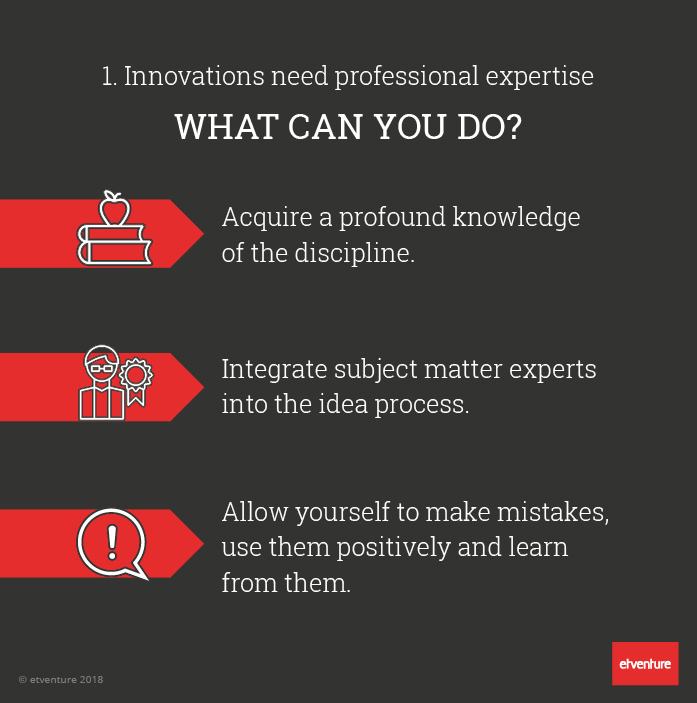
New ideas are born when the brain forms new neuronal connections from existing knowledge and memories – stored in semantic networks – and thus re-connects and re-builds concepts. The quality of the ideas that people generate depends on how much knowledge and experience they have already stored in their neural networks on a given topic.
Innovations are usually the result of years of research into the relevant topic. Steve Jobs once said: “If you look really closely, most overnight successes took a long time”. Vincent Walsh, Professor of Human Brain Research at the Institute of Cognitive Neuroscience, even calls it thematic “obsession”. Whether Einstein’s theory of relativity or Paul McCartney’s hit “Yesterday” – both “ideas” are based on years of expertise and recurring cognitive activities in the respective discipline. Walsh also points out that people who have previously failed because of an idea and emerged stronger from it, usually come up with the most important, groundbreaking ideas later on.
2: Our brain needs “downtime”.
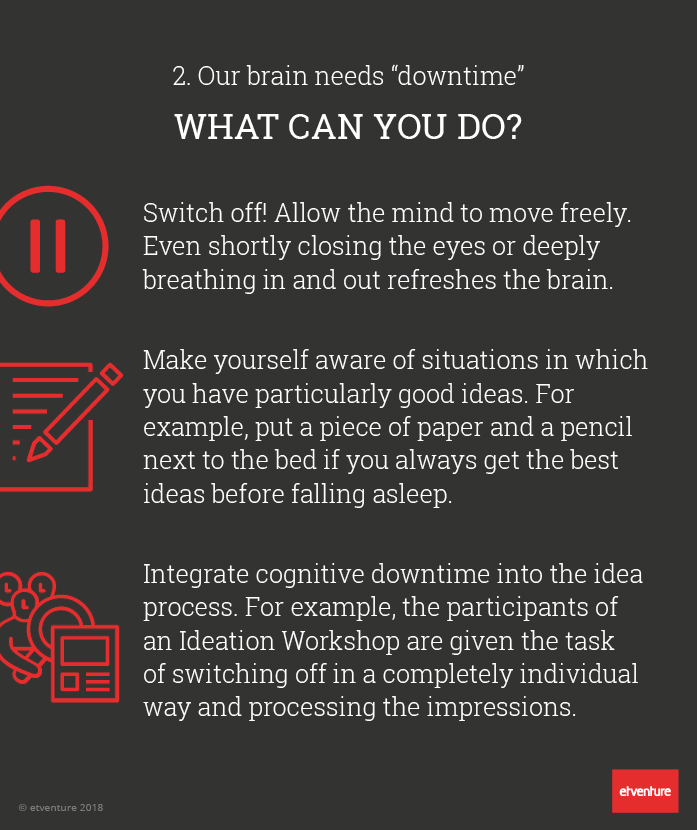 Good ideas often arise spontaneously during sports activities or a walk in nature. This is no coincidence. The linkage of new neuronal connections usually occurs when the brain is in a relaxed flow state, i. e. when it goes “offline”. Research shows, for example, that people are more creative after having daydreams, fantasizing or letting their thoughts wander. Our Default Mode Network (DMN) is active in these phases, during which we do not consciously focus on anything.
Good ideas often arise spontaneously during sports activities or a walk in nature. This is no coincidence. The linkage of new neuronal connections usually occurs when the brain is in a relaxed flow state, i. e. when it goes “offline”. Research shows, for example, that people are more creative after having daydreams, fantasizing or letting their thoughts wander. Our Default Mode Network (DMN) is active in these phases, during which we do not consciously focus on anything.
In such a “downtime” we are not inefficient, but rather give our brain the opportunity to process experiences, consolidate memories or refresh the mind in case of blockages. Afterwards you can focus on a problem again. The mix of activity and resting phase is important for the brain. Charles Dickens, for example, wrote his novels between 9 am and 2 pm. Afterwards he took a long walk to put his thoughts in order.
3: Ideas need implementation.
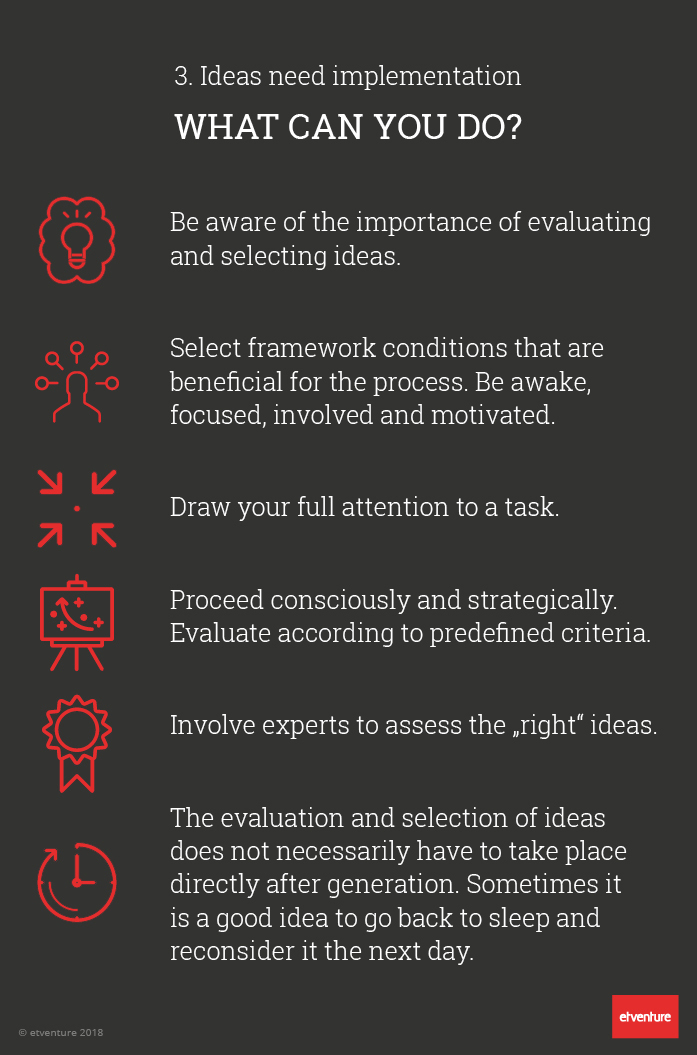 Ideation-03In order for an idea to get the chance to be implemented, it must be selected from the multitude of ideas. While the “offline” mode is conducive to the creation of ideas, the evaluation and selection of ideas depends on regaining cognitive control and going online. In particular, a brain network called the Central Executive Network (CEN), which is responsible for controlling attention and working memory, is active.
Ideation-03In order for an idea to get the chance to be implemented, it must be selected from the multitude of ideas. While the “offline” mode is conducive to the creation of ideas, the evaluation and selection of ideas depends on regaining cognitive control and going online. In particular, a brain network called the Central Executive Network (CEN), which is responsible for controlling attention and working memory, is active.
However, our mental “executive” can only process a small amount of information at the same time. What these are depends very much on our perception and attention. Whenever we delve deeply into the processing of a subject, we literally become blind to other things that would require our attention. In addition, our performance deteriorates when we try to perform several tasks at the same time.
These three factors – specialist expertise, brain downtime and the selection of ideas – are also reflected in our cognitive processes. Here, it is not only the interaction between the left, logical and right, creative half of the brain that is decisive. It is rather about synchronism between different systems that are important for creativity. Depending on the stage of the creative process and what you actually want to achieve, different brain regions are activated to accomplish the task. These considerations need to be included in an ideation process. In this way, good ideas become really “game-changing” ideas.
Further links:
From idea to implementation: 7 tips on how to implement your idea
11 Rules for Design Thinking
HPI School of Design Thinking


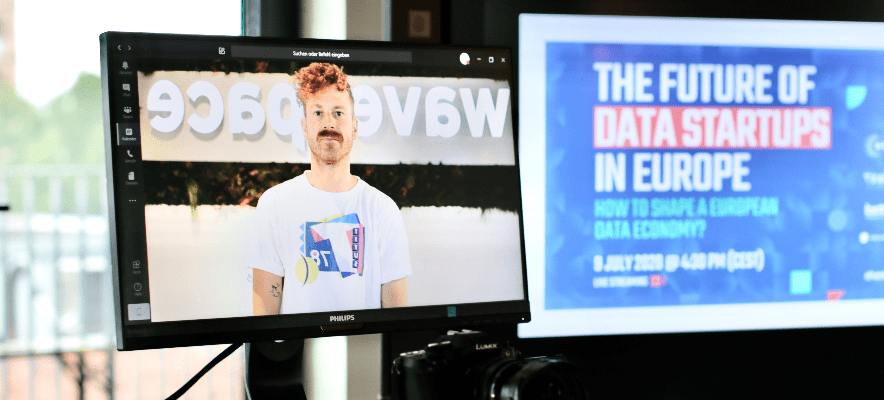
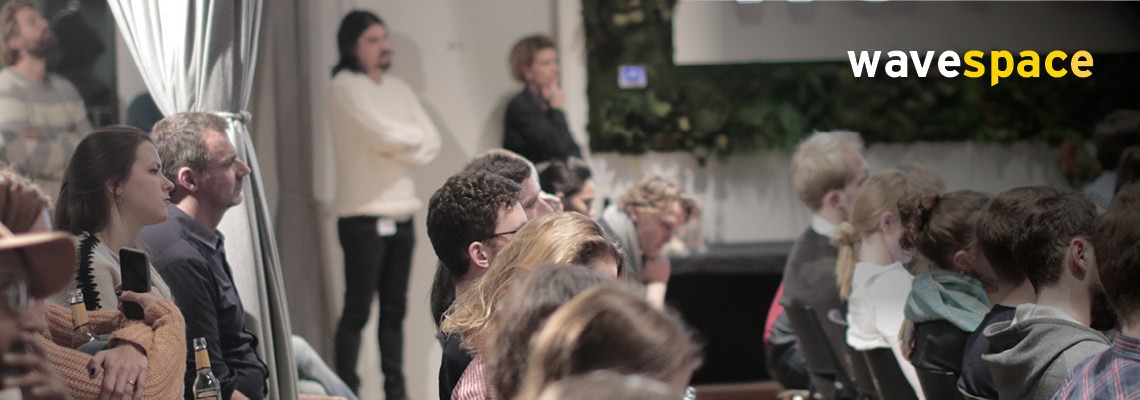
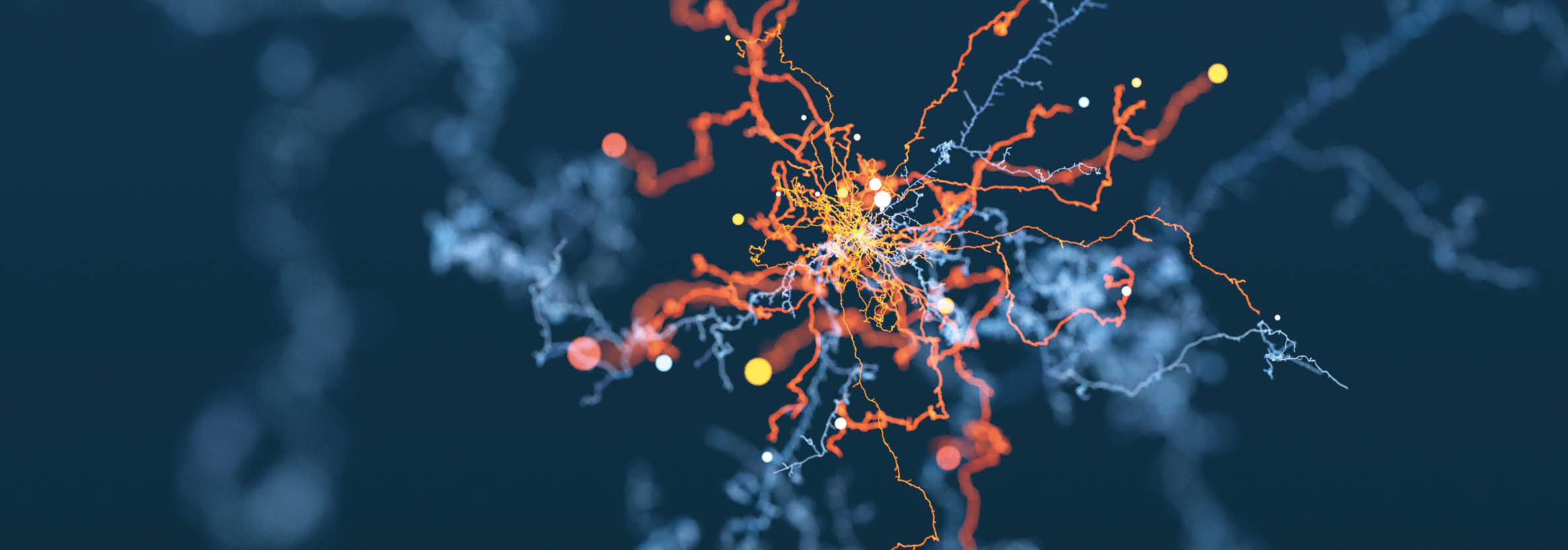
* Required field